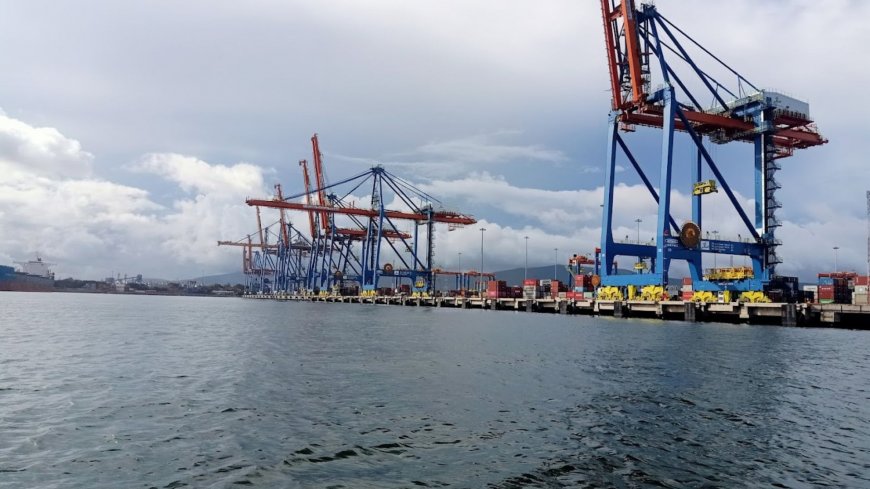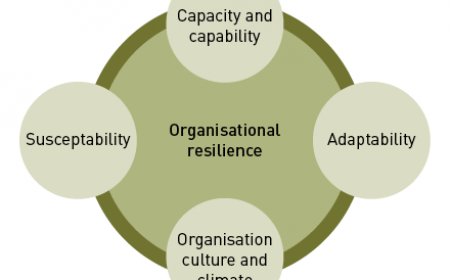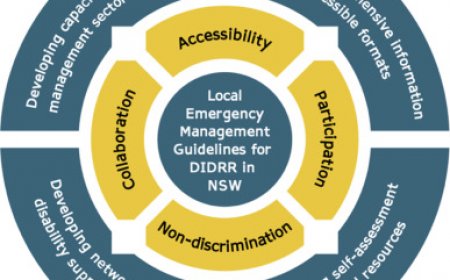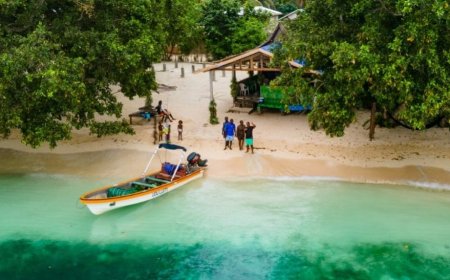Visakhapatnam: Ports and Maritime Trade in Visakhapatnam
Explore the significance of ports and maritime trade in Visakhapatnam , a vital hub for India’s economy. Learn about its history, infrastructure, challenges, and future prospects.

Visakhapatnam, often referred to as Vizag, is not only a vibrant coastal city but also a pivotal hub for maritime trade in India. Strategically located along the eastern coast of the country, this bustling port city plays a critical role in India’s economy by facilitating international trade, fostering industrial growth, and serving as a gateway for goods moving in and out of the region. The ports and maritime trade in Visakhapatnam have evolved over centuries, transforming the city into one of the busiest maritime centers in the country. This article delves into the history, significance, infrastructure, and future prospects of Visakhapatnam's ports, offering an in-depth look at how they contribute to regional and national development.
Why Visakhapatnam is a Key Player in Maritime Trade
Visakhapatnam’s prominence in maritime trade stems from its advantageous geographical location on the Bay of Bengal. Nestled between the Eastern Ghats and the coastline, the city boasts a natural harbor that has been utilized for centuries. Its deep-water port allows large vessels to dock safely, making it an ideal destination for both domestic and international shipping.
The city’s proximity to major industrial zones, coupled with excellent road, rail, and air connectivity, further enhances its importance as a logistics and trade hub. Additionally, the government’s focus on developing infrastructure and promoting exports has positioned Visakhapatnam as a cornerstone of India’s maritime strategy.
Geographical Advantages
- Natural Harbor: The bay provides calm waters, reducing risks during docking and navigation.
- Strategic Location: Situated midway along India’s eastern seaboard, it serves as a link between northern and southern regions.
- Deep Channels: These accommodate even the largest container ships without requiring extensive dredging.
Economic Significance
Visakhapatnam contributes significantly to India’s GDP through its port activities. It supports industries such as steel manufacturing, petrochemicals, fertilizers, and agriculture by ensuring seamless movement of raw materials and finished products. The port’s efficiency directly impacts supply chains, keeping costs low and boosting competitiveness.
History of Ports in Visakhapatnam
The history of ports and maritime trade in Visakhapatnam dates back thousands of years. Archaeological evidence suggests that the region was part of ancient maritime trade routes connecting South India with Southeast Asia, the Middle East, and Africa. During the reign of the Kalinga Empire and later under British colonial rule, Visakhapatnam emerged as a significant trading post.
Ancient Maritime Trade
Long before modern infrastructure existed, Visakhapatnam served as a vital node in the Indian Ocean trade network. Merchants traded spices, textiles, precious stones, and metals via wooden ships. Historical records indicate that Roman merchants frequented the region during the early centuries CE, exchanging gold and silver for Indian goods.
Colonial Era Development
Under British administration, the port underwent substantial modernization. The construction of the Outer Harbor in the early 20th century marked a turning point, enabling larger ships to anchor securely. This development laid the foundation for Visakhapatnam to become a key player in global trade.
- 1904: Construction of the breakwater began, creating a protected harbor.
- 1933: The first mechanized cargo handling system was introduced.
These developments positioned Visakhapatnam as a strategic military and commercial port during World War II.
Post-Independence Growth
After India gained independence in 1947, the Visakhapatnam Port Trust (VPT) was established to oversee operations and expansion. Over the decades, the port has grown exponentially, adapting to the demands of modern commerce while preserving its historical legacy.
- 1960s-70s: Expansion of berths and terminals to handle increasing traffic.
- 1980s-90s: Introduction of specialized facilities for containers and bulk cargo.
- 2000s-Present: Adoption of advanced technologies and sustainability measures.
Infrastructure of Visakhapatnam Port
The Visakhapatnam Port is one of the largest and busiest ports in India, handling millions of tons of cargo annually. It is classified as a Major Port under the Indian Ports Act, 1908, and operates under the jurisdiction of the Visakhapatnam Port Trust.
Key Features of the Port
-
Natural Deep-Water Harbor:
The port benefits from a naturally deep channel, allowing it to accommodate massive container ships and bulk carriers without extensive dredging. -
Modern Facilities:
Equipped with state-of-the-art cargo handling equipment, warehouses, and storage facilities, the port ensures efficient loading and unloading processes. -
Multiple Terminals:
- Inner Harbor: Primarily used for passenger ferries and smaller vessels.
- Outer Harbor: Handles large cargo ships and tankers.
- Specialized Terminals: Dedicated terminals for containers, coal, petroleum products, and fertilizers.
-
Connectivity:
The port is well-connected via rail and road networks, ensuring seamless transportation of goods across India. The nearby GMR International Airport adds another layer of accessibility.
Cargo Handling Capacity
- Annual Throughput: Over 75 million metric tonnes.
- Berths: More than 24 operational berths catering to different types of cargo.
- Storage Facilities: Spacious warehouses and open yards for temporary storage.
Technological Integration
Recent advancements include:
- Automated crane systems for faster loading/unloading.
- Real-time tracking of shipments using GPS and IoT.
- Digital documentation to reduce paperwork and delays.
Role of Visakhapatnam Port in Maritime Trade
The ports and maritime trade in Visakhapatnam play a crucial role in driving economic growth at both regional and national levels. Here are some key contributions:
1. Export Hub
Visakhapatnam serves as a vital export hub for various commodities, including:
- Steel and iron ore
- Minerals like bauxite and manganese
- Agricultural products such as rice and pulses
- Petroleum products
These exports cater to markets in Europe, the Americas, Africa, and Asia, reinforcing India’s position as a global supplier.
2. Import Gateway
The port facilitates the import of essential raw materials required for industries in Andhra Pradesh and neighboring states. Common imports include:
- Coal for power generation and steel manufacturing
- Crude oil and refined petroleum products
- Fertilizers for agriculture
- Machinery and equipment
By ensuring a steady flow of imports, the port supports industrial production and agricultural productivity.
3. Employment Generation
The port directly employs thousands of people, ranging from dockworkers and engineers to administrative staff. Indirectly, it supports livelihoods in related sectors such as logistics, transportation, and hospitality.
4. Industrial Development
The presence of a robust port infrastructure has spurred the establishment of several industries in and around Visakhapatnam. These include shipbuilding yards, refineries, fertilizer plants, and steel mills. The synergy between the port and these industries creates a thriving ecosystem conducive to economic progress.
Challenges Facing Visakhapatnam Port
Despite its many strengths, the ports and maritime trade in Visakhapatnam face certain challenges that need addressing to sustain long-term growth.
1. Congestion Issues
As traffic volumes increase, congestion at berths and terminals can lead to delays. Expanding capacity and optimizing operations are necessary to mitigate this issue.
2. Environmental Concerns
Port activities, particularly those involving hazardous materials, pose environmental risks. Efforts must be made to adopt eco-friendly practices and minimize pollution.
3. Competition from Other Ports
With other ports along India’s eastern coast expanding their capabilities, Visakhapatnam faces stiff competition. Continuous innovation and investment are needed to maintain its competitive edge.
4. Technological Upgrades
To keep pace with global standards, the port requires ongoing technological advancements in areas such as automation, digital tracking, and cybersecurity.
Future Prospects for Visakhapatnam Port
The future looks promising for ports and maritime trade in Visakhapatnam , thanks to several initiatives aimed at enhancing its capabilities.
1. Expansion Projects
Ongoing projects include the construction of new terminals, deepening of channels, and expansion of storage facilities. These efforts will significantly boost the port’s capacity and efficiency.
2. Smart Port Initiatives
The adoption of smart technologies, such as IoT-enabled monitoring systems and AI-driven analytics, will streamline operations and reduce turnaround times.
3. Green Port Initiatives
The port authorities are committed to reducing the carbon footprint through renewable energy installations, waste management programs, and sustainable practices.
4. Regional Integration
Plans to integrate Visakhapatnam Port with inland waterways and multimodal transport networks will enhance connectivity and reduce logistics costs.
Comparison Table: Major Ports in Eastern India
Review: Verdict on Ports and Maritime Trade in Visakhapatnam
Visakhapatnam Port stands out as a beacon of progress in India’s maritime sector. Its strategic location, advanced infrastructure, and commitment to sustainability make it a model for other ports to emulate. While challenges exist, proactive measures are being taken to address them, ensuring that the port remains a linchpin of India’s trade and industry.
Conclusion
The ports and maritime trade in Visakhapatnam are integral to the city’s identity and India’s economic fabric. As a dynamic hub of commerce and connectivity, Visakhapatnam continues to evolve, embracing innovation and sustainability to meet the demands of a rapidly changing world. For businesses, travelers, and policymakers alike, understanding the significance of this port provides valuable insights into the broader narrative of India’s maritime prowess.
10 FAQs About Ports and Maritime Trade in Visakhapatnam
-
Q: What is the main function of Visakhapatnam Port?
A: It facilitates the import and export of goods, supporting trade and industry. -
Q: How old is Visakhapatnam Port?
A: The port has been operational since ancient times, with modern developments starting in the early 20th century. -
Q: What types of cargo does Visakhapatnam Port handle?
A: It handles coal, crude oil, containers, fertilizers, and minerals. -
Q: Is Visakhapatnam Port open 24/7?
A: Yes, it operates round the clock to ensure timely delivery of goods. -
Q: What industries benefit from the port?
A: Steel, petroleum, agriculture, and manufacturing industries rely heavily on the port. -
Q: How does the port contribute to employment?
A: It provides direct jobs to thousands and indirectly supports lakhs of livelihoods. -
Q: Are there any green initiatives at the port?
A: Yes, the port is implementing renewable energy projects and waste reduction programs. -
Q: Can tourists visit Visakhapatnam Port?
A: Certain areas are accessible for guided tours, offering a glimpse into maritime operations. -
Q: What is the nearest airport to the port?
A: GMR International Airport is approximately 20 km away. -
Q: How is the port addressing congestion issues?
A: Through expansion projects, technological upgrades, and process optimization.
What's Your Reaction?
 Like
0
Like
0
 Dislike
0
Dislike
0
 Love
0
Love
0
 Funny
0
Funny
0
 Angry
0
Angry
0
 Sad
0
Sad
0
 Wow
0
Wow
0














































